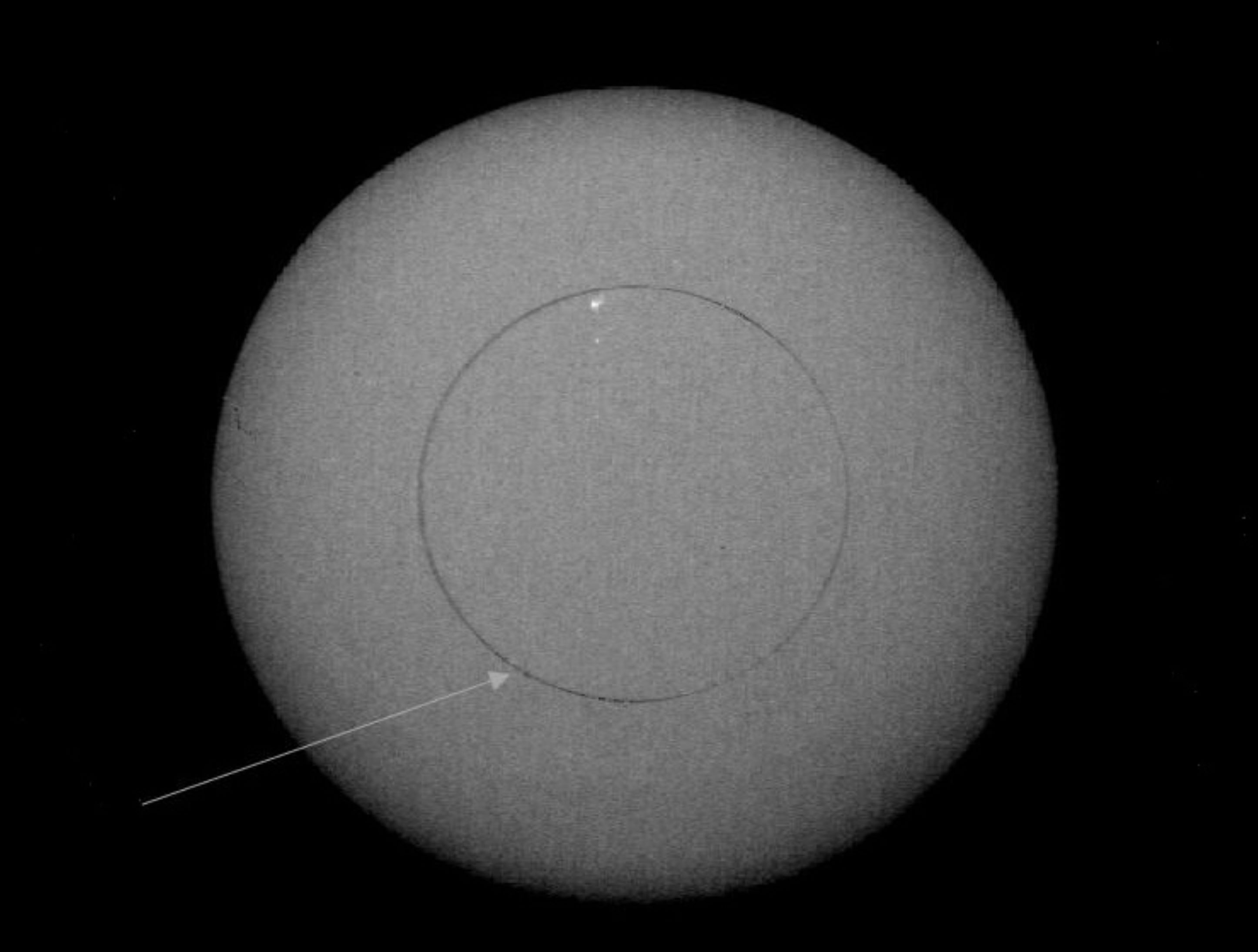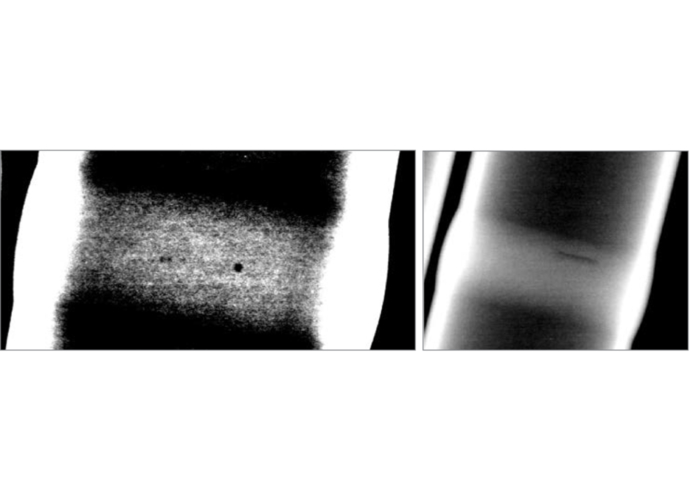Crack Image Quality Indicator (CIQI)
aerospace
Crack Image Quality Indicator (CIQI) (MSC-TOPS-87)
CIQIs efficiently optimize X-ray part inspections
Overview
Innovators at NASA Johnson Space Center have developed a modeling and manufacturing technique that generates unique verification tools which simulate cracks in metals within X-ray setup part-testing geometries. The tooling specimens such as the example shown above with its manufactured circular crack also enable verification of x-ray radiography sensitivity for crack detection inspection setups. Given the complications associated with crack detection via x-ray radiography, steps must be taken to ensure detection reliability. Thus, a demonstration of crack detection with a specific crack demonstration tool is performed to estimate probability of detection (POD). An ideal crack demonstration tool will match the alloy type, geometry, thickness, and expected crack morphology of the components to be tested. An inexpensive crack verification toolset that accurately represents crack-like discontinuities for various metal components would allow for reliable crack POD demonstrations while costing less and saving time over users having to generate their own fatigue crack specimens.
The Technology
X-ray radiography is commonly used for the detection of cracks in metal parts such as those used in the aerospace industry. A typical application is for weld inspection where volumetric flaws such as pores, inclusions and flaws resulting in volumetric features such as suck-back, and under-cut are detected. The x-ray inspection of welds is also meant to detect cracklike or tight flaws and cracks that provide linear indications. X-ray inspection reliability is based on POD of the desired minimum size cracks in suitable crack specimens. The demonstrated x-ray technique is then assumed to provide the same level of POD in actual part inspection. However, in many cases the POD demonstration specimens and setup are not similar to that used for x-ray inspection of actual parts due to the lack of appropriate demonstration crack verification toolsets. The ideal demonstration toolset shall match the parts to be tested in alloy type, part geometry, thickness and expected crack morphology, target crack size, locations, and orientations. If a qualified CIQI tool is available at the time of part inspection, x-ray technique sensitivity for crack detection can be verified for the part inspection setup. A CIQI toolset could provide simulated known crack sizes and have the same material and geometry for x-ray inspection to that of the actual part. Ideally, the appropriate crack specimen can be used to make a CIQI tool but manufacturing specimens with cracks of controlled morphology and size for different x-ray applications with different material alloys and thicknesses may be impractical and cost prohibitive. Therefore, cheap CIQI toolsets with representative cracklike discontinuities may be desired by industry.
The Crack Image Quality Indicator (CIQI) is a technology readiness level (TRL) 6 (system/sub-system model or prototype demonstrated in an operational environment). The innovation is now available for your company to license. Please note that NASA does not manufacture products itself for commercial sale.


Benefits
- Characterizes crack detection capabilities
- Enables development of crack detection requirements/standards
- Optimizes X-ray radiography test setups
- Inexpensive to manufacture
- Use of standardized crack verification toolsets can save time
Applications
- Industrial x-ray radiography
- Aerospace manufacturing
- Gas and oil pipeline manufacturing
- Gas turbine manufacturing
- Prosthetic manufacturing


